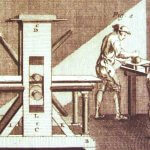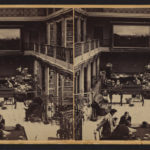Philippe de Commynes, the envoy of the French king Charles VIII, observed in 1495 that “most of their people are foreigners'.
Your holy community bears more affinity to Noah than any other sector of the Jewish people... Leon Modena to the Sephardim of Venice
The process of admission of foreigners changed many times during the centuries of the Serenissima.
Foreign immigrants could be admitted as citizens, residents, and, on few occasions as part of the nobility in return for large financial payments. The nobles possessed a monopoly of all political rights and power and could engage in commerce both within the city and outside it. Below the nobles were the cittadini originarii (citizens by birth). To be a member of this group required proof of having been born in Venice of legitimately born ancestors who had resided in Venice for at least three generations.
The cittadini had no political power, and were employed in the upper echelons of the “civil service” of Venice. Other cittadini earned their living engaging in urban professions such as law and medicine, and serving as notaries and scribes. Like the nobles, they could engage freely in trade in the city as well as with the Levant, and many were large-scale merchants and traders.
Eventually, the ranks of the cittadini were closed, as had been that of the nobles. The remaining approximately 90 per cent of the population of the city, the popolo minuto, had no political or economic rights.
Greeks and Germans. Minorities had to organize themselves as lay associations with its own bylaws and officials. This was called scuola or confraternity. Scuole were generally open to foreigners. They could also request to organize their own scuola.
In addition to promoting the group solidarity of foreigners who wished to remain part of a minority, scuole provided members with spiritual support as well as mutual economic assistance. Their right to worship was granted and regulated at the discretion of the government.
The earliest documented minorities include Greeks, Dalmatians, and Albanians who worked mostly as sailors, shipbuilders and petty urban trades such as artisans, bakers, barbers and glass workers. While early minorities resided everywhere in the city, since 1228, Germans merchants were given permission to reside in the Fondaco, where they stored their merchandise. This limitation was reinforced in the 16th century to limit the spread of new Protestant ideas.
The collection of Greek and Latin manuscripts that the Greek cardinal Bessarion gave to the republic lead to the construction of the Biblioteca Marciana. The first book in Greek was published in Venice in 1471, and several Greek presses were established, including Aldo Manuzio's. Learned Greeks were employed as teachers, copyists of manuscripts, and translators, giving impetus to the dissemination of humanism.
The Ottomans. With the definition of Ottoman turks Venetian usually referred to all Muslims. Like the Jews, they were considered infidels rather than heretics. Something that, at least until the Protestan reformation, was tolerated in the Catholic world although with a reluctance that eventually lead to segregate them. After the Ottomans took possession of the Dalmatian hinterland in the later 14th century, and especially after the fall of Constantinople in 1453, the presence of Muslims in Venice became more frequent and attracted increasing attention in art and literature.
Ottomans came to Venice and stayed in inns or private homes. Some were captured in warfare and served as domestics in Venetian patrician households. As well as being considered religiously undesirable, visiting Ottoman Muslims were increasingly perceived as constituting a real political threat. Records of various incidents shed light on these tensions.
In 1573 to request from the government “for the convenience of trade, a place of their own, as the Jews have their ghetto.” Eventually the Ottoman were given a Fondaco and forced to live there where they were allowed to have a small mosque.
The Persians and other Muslims were also given order to move the the Fondaco but instead decided to leave the city. In the late 16th century, Japanese and Chinese delegations arrived in the city as well as an Indian mission.
The Jews. In the 14th century, only a few Jews dwelled in Venice, while others passed through the city, possibly staying temporarily. When, in 1382, the Venetian government began to allow moneylending, mostly Jews responded and, in 1385, received a charter to operate in the city for 10 years along with a land for their cemetery. No explicit residence permit was implied, although it is likely that some Jews found ways to reside in the city.
In 1509, Jewish refugees fleeing the League of Cambrai war, arrived in Venice. In 1513, the government granted two wealthy Jewish moneylenders a five-year charter for lending that was needed to assist the poor. This attracted an increasing number of Jews, including those who had been expelled from Spain. In 1516, the senate required all Jews to live together, segregated and enclosed on the island in Cannareggio already then known as the Ghetto nuovo because of its association with the municipal copper foundry. Gates were erected and Jews were not allowed to leave their quarters at night.
Although many Jews tried to avoid moving to the ghetto, the institution of the ghetto constituted a form of legitimization of Jewish residence in the city at a time of turmoil when the Jews lived in great uncertainty all over Europe and sought permanency.
By the end of the 16th century, Sephardic merchants (Ponentini and Levantini) had acquired many privileges that pertained solely to the Patricians. Attempts to request the admission of other foreigners following the model of Jewish merchants, were thoroughly discussed but eventually rejected.
Separated in the ghetto, Jews were granted the right to build their own synagogue, one for each “nation,” Italian-German, Levantine, and Spanish-Portuguese. The charter protected them from forced attendance of mass and forced conversion.
Religious and internal administrative freedom did not coincide with economic and civic freedom. The Jews remained highly controlled and continue to reside in Venice on sufferance and bit by right.
Reference: Ravid, Benjamin, E. Dursteler, ed., ed. Venice and its Minorities. Leiden-Boston: Brill, 2013.



